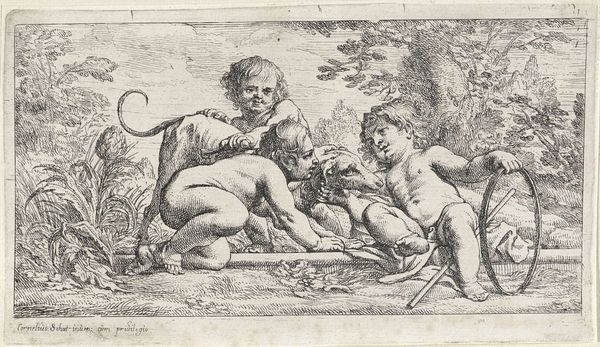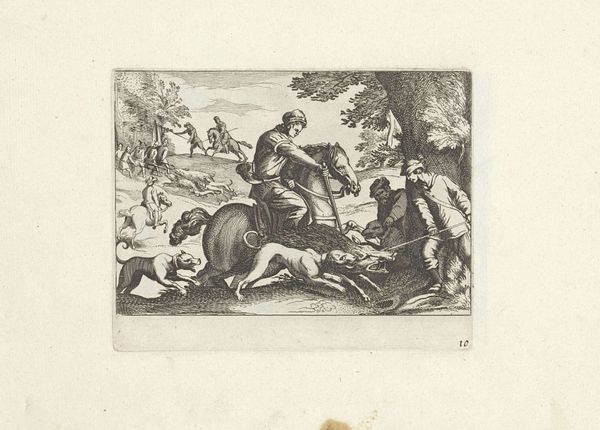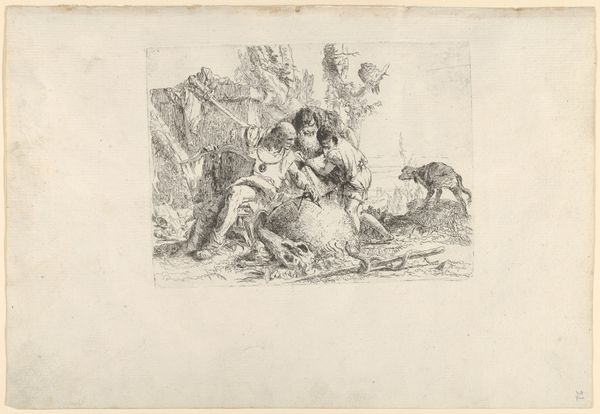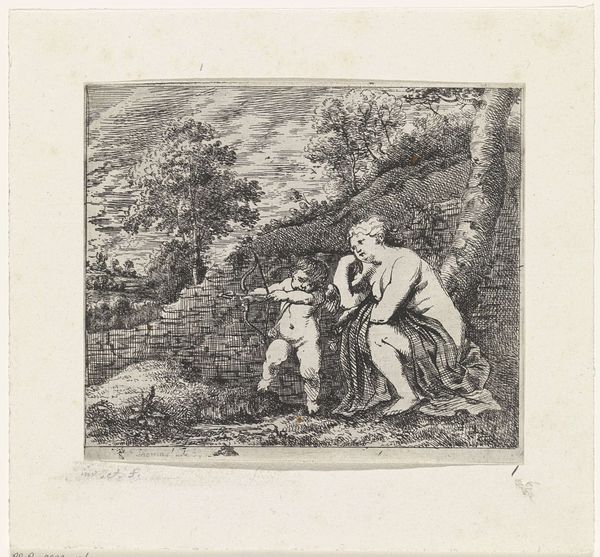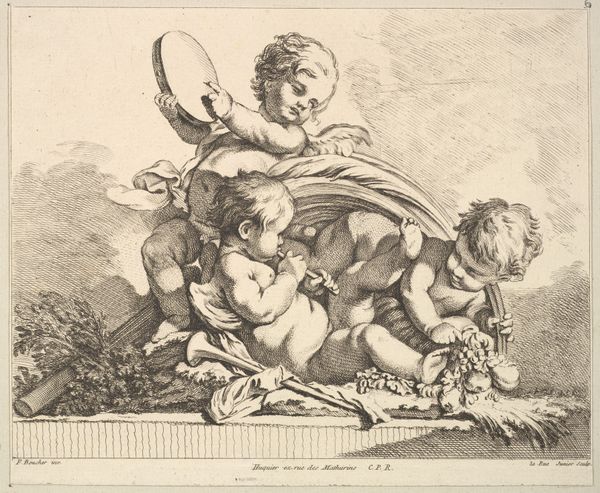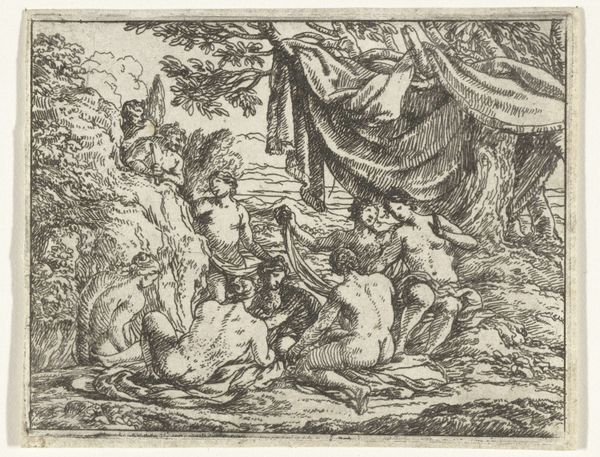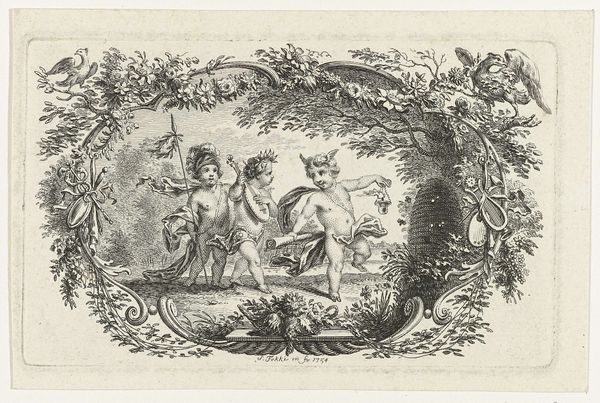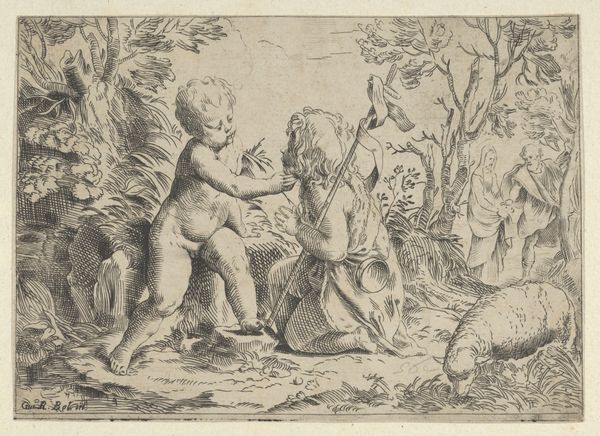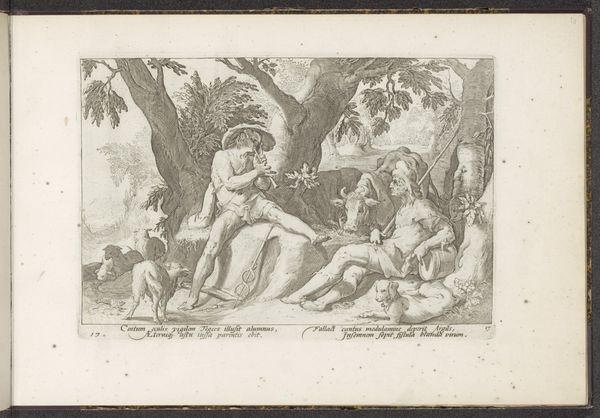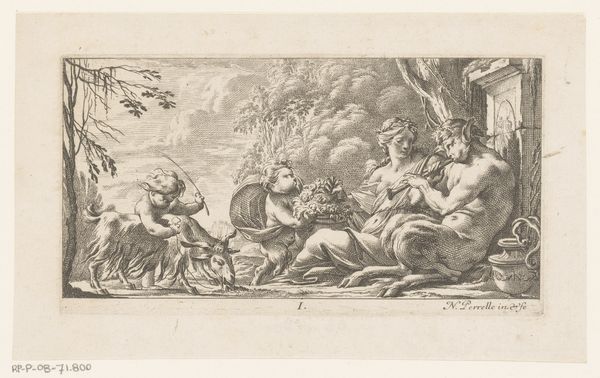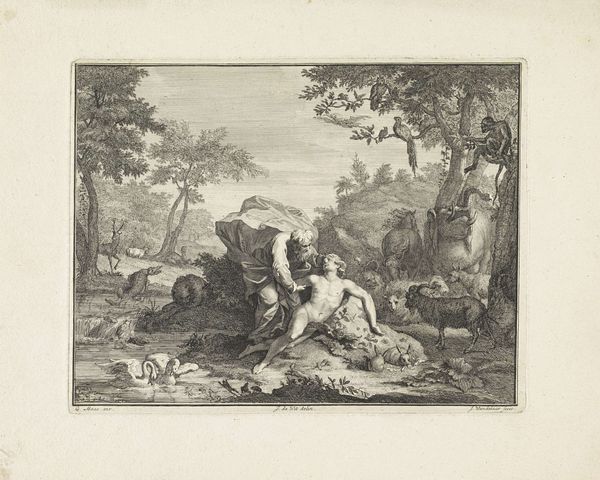
print, engraving
#
aged paper
#
baroque
# print
#
dog
#
old engraving style
#
landscape
#
figuration
#
genre-painting
#
engraving
Dimensions: height 132 mm, width 220 mm
Copyright: Rijks Museum: Open Domain
Editor: So, here we have "Three Putti Playing with a Dog," an engraving likely made between 1618 and 1705 by an anonymous artist. The level of detail achieved through this medium is fascinating. What draws your attention when you look at this print? Curator: I'm immediately thinking about the labor involved. Look at the repetitive, controlled motions required to create this image through engraving. How does the printmaking process, this very act of multiplication, democratize or commodify the artistic idea? Editor: That’s a fascinating point. I hadn't considered the democratizing aspect of printmaking in contrast to, say, painting. How might the social context of 17th-century art influence the making of a print like this one? Curator: These playful cherubs and the dog feel almost mass-producible, like decorative elements made for a growing consumer class. How does that level of replication, the print being spread around, affect its status as “art”? Or does the sheer skill involved elevate it? Editor: I see what you mean. The cherubs themselves become almost like little commodities within the broader landscape of art production. What about the aged paper it's printed on – does that play into this analysis? Curator: Absolutely. That paper speaks volumes about time and the preservation process. It’s a raw material that adds to the print's unique quality, evidence of a social and economic history we’re only glimpsing here. Editor: It’s like the material tells its own story of production and consumption across centuries. Curator: Exactly! And thinking about that history and the context helps to demystify some of the inherent art world bias around what deserves critical attention. It pushes us to see the means of art as an intrinsic part of what it expresses. Editor: This has been so enlightening; I’ll definitely look at prints, and all art really, with new eyes now. Curator: Good. Always look for the production – how something is made informs why.
Comments
No comments
Be the first to comment and join the conversation on the ultimate creative platform.
